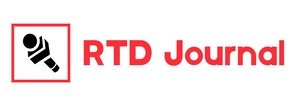How Sustainable Lithium Production Can Power the Green Energy Transition?

Lithium is a key element for the development of clean energy solutions, especially for electric vehicles and renewable energy storage systems. However, the conventional methods of lithium extraction and processing have significant environmental and social impacts, such as water consumption, greenhouse gas emissions, and human rights violations. To address these challenges, innovators and researchers are exploring new ways to produce lithium sustainably and responsibly, using advanced technologies and natural resources. In this article, we will examine some of the promising approaches for sustainable lithium production and how they can contribute to the global shift towards a low-carbon economy.

Lithium Extraction from Brine: A Solar-Powered Solution
One of the most common sources of lithium is brine, a salty water solution that contains various minerals and metals. Brine is typically found in underground reservoirs or salt lakes, such as the Salar de Atacama in Chile, the largest lithium reserve in the world. The traditional method of extracting lithium from brine involves pumping the brine to the surface and evaporating the water in large ponds, using sunlight and wind. This process can take up to 18 months and requires a lot of land and water resources. Moreover, the chemical treatments used to purify the lithium can generate toxic waste and contaminate the surrounding environment.
To overcome these drawbacks, some companies are developing more efficient and eco-friendly ways to extract lithium from brine, using solar energy and direct lithium extraction (DLE) technology. For instance, SLB, a leading provider of energy solutions, has launched a pilot plant in Nevada, USA, that uses DLE to produce battery-grade lithium in weeks instead of months. The plant also reduces water consumption by more than 85% compared to conventional methods1. Another example is EnergyX, a company that uses nanotechnology and renewable energy to extract lithium from brine in a sustainable and scalable way. These innovations can help reduce the environmental footprint of lithium extraction and increase the economic value of lithium-rich resources.
Lithium Extraction from Mines: A Geothermal-Powered Solution
Another common source of lithium is hard rock, such as spodumene, a mineral that contains lithium and other elements. Hard rock lithium is mainly found in Australia, the largest lithium producer in the world, and China, the largest lithium consumer in the world. The conventional method of extracting lithium from hard rock involves mining the ore and processing it with high-temperature and high-pressure techniques, such as roasting and leaching. This process consumes a lot of energy and generates a lot of carbon emissions. Furthermore, mining activities can cause land degradation, biodiversity loss, and social conflicts.
To address these issues, some companies are exploring alternative ways to extract lithium from hard rock, using geothermal energy and circular economy principles. For example, Vulcan Energy Resources, a company based in Germany, has developed a zero-carbon lithium extraction process that uses geothermal brine, a hot and saline water solution that is enriched with lithium and other metals3. The process involves extracting the heat and lithium from the geothermal brine, using the heat to generate electricity and the lithium to produce battery-grade lithium hydroxide3. The process also recycles the water and returns it to the underground reservoir, creating a closed-loop system3. Another example is Cornish Lithium, a company based in the UK, that has partnered with Geothermal Engineering Ltd to extract lithium from geothermal brine in Cornwall, a region with a rich mining history and a potential geothermal hotspot4. These innovations can help create a sustainable and carbon-neutral lithium supply chain, while also supporting the local communities and industries.
The Future of Sustainable Lithium Production
As the demand for lithium continues to grow, driven by the global transition to green energy sources, the need for sustainable lithium production becomes more urgent and important. The current methods of lithium extraction and processing are not compatible with the environmental and social goals of the green energy transition, as they pose significant risks and challenges for the planet and its people. Therefore, it is essential to develop and implement new solutions that can produce lithium sustainably and responsibly, using advanced technologies and natural resources. By doing so, we can ensure that lithium can play a positive role in powering the green energy transition, rather than becoming a source of conflict and controversy.




